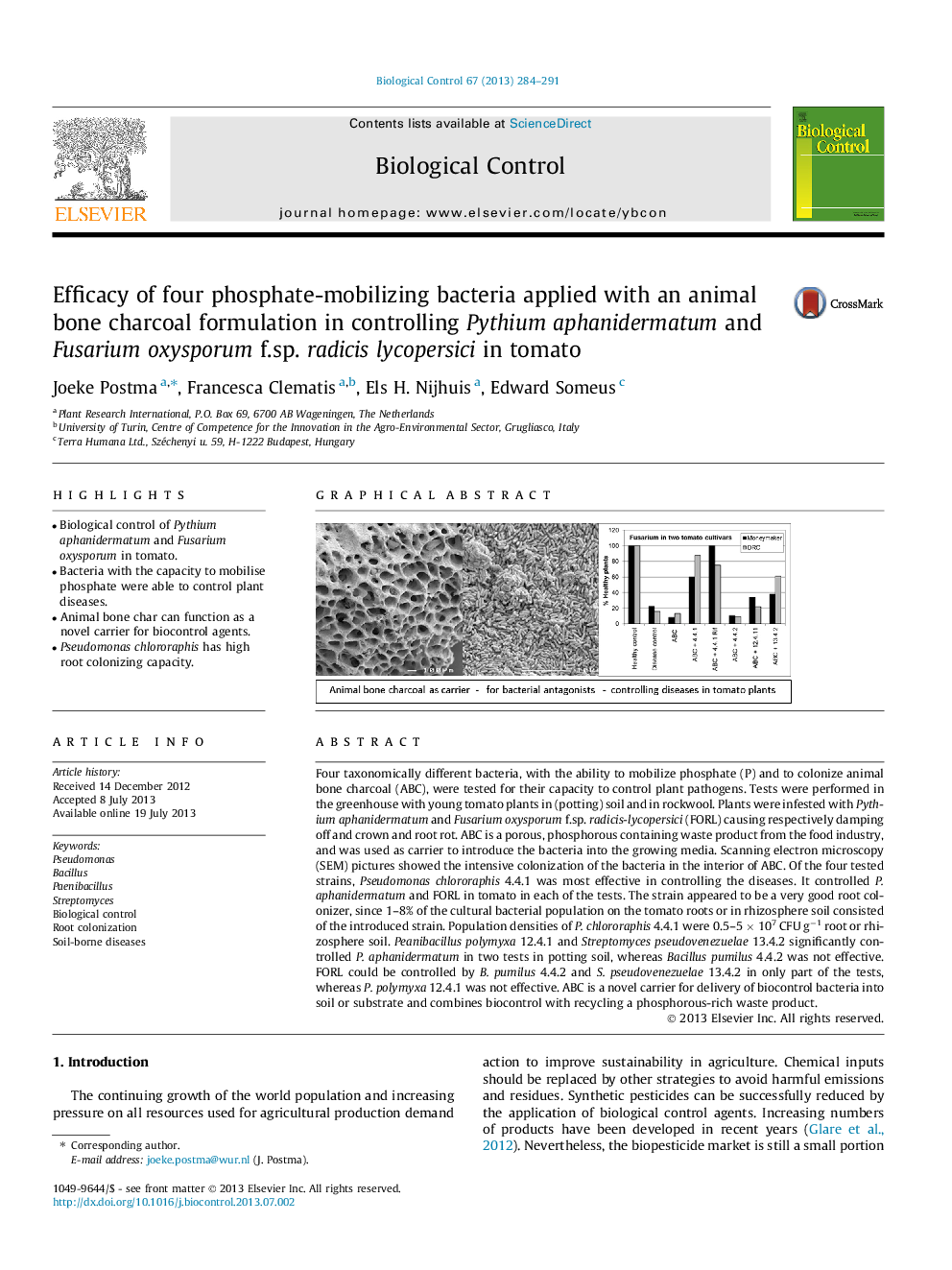| Article ID | Journal | Published Year | Pages | File Type |
|---|---|---|---|---|
| 4504061 | Biological Control | 2013 | 8 Pages |
•Biological control of Pythium aphanidermatum and Fusarium oxysporum in tomato.•Bacteria with the capacity to mobilise phosphate were able to control plant diseases.•Animal bone char can function as a novel carrier for biocontrol agents.•Pseudomonas chlororaphis has high root colonizing capacity.
Four taxonomically different bacteria, with the ability to mobilize phosphate (P) and to colonize animal bone charcoal (ABC), were tested for their capacity to control plant pathogens. Tests were performed in the greenhouse with young tomato plants in (potting) soil and in rockwool. Plants were infested with Pythium aphanidermatum and Fusarium oxysporum f.sp. radicis-lycopersici (FORL) causing respectively damping off and crown and root rot. ABC is a porous, phosphorous containing waste product from the food industry, and was used as carrier to introduce the bacteria into the growing media. Scanning electron microscopy (SEM) pictures showed the intensive colonization of the bacteria in the interior of ABC. Of the four tested strains, Pseudomonas chlororaphis 4.4.1 was most effective in controlling the diseases. It controlled P. aphanidermatum and FORL in tomato in each of the tests. The strain appeared to be a very good root colonizer, since 1–8% of the cultural bacterial population on the tomato roots or in rhizosphere soil consisted of the introduced strain. Population densities of P. chlororaphis 4.4.1 were 0.5–5 × 107 CFU g−1 root or rhizosphere soil. Peanibacillus polymyxa 12.4.1 and Streptomyces pseudovenezuelae 13.4.2 significantly controlled P. aphanidermatum in two tests in potting soil, whereas Bacillus pumilus 4.4.2 was not effective. FORL could be controlled by B. pumilus 4.4.2 and S. pseudovenezuelae 13.4.2 in only part of the tests, whereas P. polymyxa 12.4.1 was not effective. ABC is a novel carrier for delivery of biocontrol bacteria into soil or substrate and combines biocontrol with recycling a phosphorous-rich waste product.
Graphical abstractFigure optionsDownload full-size imageDownload as PowerPoint slide
